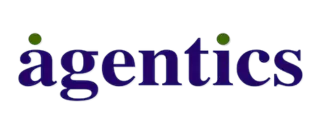
Chatbot Meaning: Defining Its Role in Modern Business Communication
GeneralOverview
Chatbots are essential in contemporary business communication, automating client interactions, providing round-the-clock support, and enhancing user experience through prompt responses. By leveraging both rule-based and AI-driven chatbots, organisations can significantly boost operational efficiency and customer satisfaction. These tools adeptly manage routine inquiries, freeing human agents to concentrate on more intricate tasks. The implementation of chatbots not only streamlines processes but also elevates the overall customer experience, making a compelling case for businesses to integrate these AI solutions into their operations.
Introduction
The rise of digital communication has fundamentally transformed how businesses engage with their clients, positioning chatbots as a pivotal element in contemporary business strategies. These intelligent systems not only enhance customer service by providing immediate responses but also streamline operations, allowing companies to concentrate on complex queries that necessitate a human touch. As organisations increasingly depend on these automated assistants, a critical question arises: how can businesses effectively leverage various types of chatbots to maximise their impact on customer engagement and operational efficiency?
Define Chatbot: Understanding the Core Concept
A chatbot meaning refers to a sophisticated software programme designed to replicate human dialogue through text or voice exchanges. It operates by processing user inputs and generating responses that closely resemble human interaction. The chatbot meaning encompasses two categories:
- Rule-based chatbots, which adhere to predefined scripts.
- AI-driven chatbots, which leverage natural language processing (NLP) and machine learning to understand and respond to user queries with greater dynamism.
This technology empowers companies to automate client interactions, delivering prompt replies and significantly enhancing user experience.
With Agentics’ Text AI Agents, organisations can engage with clients across chat, SMS, or messaging applications, streamlining operations with intelligent assistants that efficiently retrieve answers from documents. This innovation not only alleviates teams from repetitive tasks but also boosts communication efficiency, fostering ongoing engagement and support throughout the client journey. By implementing customised AI conversational agents, businesses can markedly elevate customer engagement and operational efficiency, transforming their sales strategies while improving overall client satisfaction.
Moreover, AI chat enhances communication within sales teams by automating routine inquiries, enabling team members to concentrate on more complex interactions. This strategic shift ultimately leads to a more effective allocation of resources, maximising both productivity and client satisfaction.
Trace the Evolution of Chatbots: From Early Models to Modern Applications
The journey of conversational agents commenced in the 1960s with ELIZA, a groundbreaking programme developed by Joseph Weizenbaum that simulated a psychotherapist’s conversation. Over the decades, these conversational agents have transformed from basic rule-based systems into sophisticated AI-driven models. The introduction of Natural Language Processing (NLP) in the 1990s represented a significant turning point, empowering automated conversational agents to comprehend context and intent. Today, the chatbot meaning involves leveraging advanced AI technologies, enabling them to handle a wide range of tasks—from support inquiries to personalised marketing engagements—thus becoming integral to modern communication strategies.
To effectively implement AI chat, companies can follow the ‘5 Steps to Implement AI Chat’ outlined in Agentics’ guide, which emphasises the importance of understanding user needs and creating user-friendly interactions. Additionally, adhering to the ‘9 Principles for Effective Chatbot Design’ can significantly enhance the efficacy of these tools, leading to improved user engagement and operational efficiency. The transformative impact of AI conversational agents on organisational communication and marketing practises is undeniable, driving growth and enhancing customer interactions.
Explore Types of Chatbots: Functionalities and Use Cases
Chatbots can be categorised into several distinct types, each serving unique functions in modern business communication:
-
Rule-Based Systems: These automated systems operate on predefined scripts, making them ideal for addressing straightforward queries. They thrive in settings where consistent answers are essential, such as FAQs or basic client support.
-
AI-Driven Conversational Agents: Utilising machine learning and natural language processing (NLP), AI-driven conversational agents gain insights from user engagements, allowing them to provide tailored responses. This flexibility enables companies to improve client interaction substantially, as these automated systems can handle up to 67% of frequent inquiries and repetitive tasks. The transformative effect of AI conversational agents on business communication is clear; they not only boost efficiency but also elevate customer satisfaction through personalised engagements.
-
Voice-Activated Assistants: Designed for voice interactions, these programmes are prevalent in virtual helpers like Amazon’s Alexa and Google Assistant. They facilitate hands-free communication, making them particularly useful in scenarios where users prefer voice commands over text.
-
Hybrid Systems: Combining the strengths of both rule-based and AI capabilities, hybrid systems can manage a broader spectrum of inquiries. This versatility allows them to provide immediate responses for simple questions while also engaging in more complex conversations when necessary.
The present market demonstrates an increasing dependence on automated assistants, with over 300,000 companies globally employing platforms like Tidio to improve client satisfaction and boost conversions. As organisations increasingly adopt these technologies, the distinction between rule-based and AI-powered conversational agents becomes crucial. While rule-based virtual assistants may struggle with personalised interactions, AI-powered alternatives can create more engaging experiences, ultimately enhancing client satisfaction and operational efficiency. This evolution in chatbot technology highlights the chatbot meaning, emphasising the significance of choosing the appropriate type for particular organisational needs to ensure effective communication strategies that connect with customers.
Incorporating the ‘9 Principles for Effective Chatbot Design’ can further enhance the effectiveness of these automated conversational agents. These principles guide companies in developing automated conversational agents that not only fulfil user expectations but also align with organisational objectives. Additionally, following a step-by-step guide for building AI agents can provide practical insights for businesses looking to implement these technologies effectively.
As Mokokoma Mokhonoana observed, the societal changes caused by smartphones and social media have made it possible for automated conversational agents to become essential to contemporary communication. Furthermore, studies such as the one conducted by Fryer and Carpenter demonstrate that users often feel more at ease interacting with automated systems than with human partners, highlighting the practical implications of these technologies in enhancing user experience.
Assess the Impact of Chatbots on Business Communication and Efficiency
The chatbot meaning has become evident as chatbots revolutionise business communication by delivering 24/7 support, significantly reducing response times, and enhancing client satisfaction. Organisations like Agentics.uk exemplify this transformation by employing automated systems that facilitate instant replies to inquiries. This advancement not only elevates the user experience but also allows human agents to concentrate on more complex issues requiring personal attention.
Furthermore, automated assistants can analyse client information to tailor interactions, resulting in heightened engagement rates and improved sales outcomes. The integration of virtual assistants into organisational workflows boosts efficiency, lowers operational costs, and enhances overall productivity.
Industry insights reveal that companies implementing automated messaging systems witness a remarkable uptick in client satisfaction, with some reporting engagement metric improvements of up to 30%. As business leaders assert, the strategic deployment of chatbots reflects the chatbot meaning, transcending mere automation; it signifies a pivotal shift towards enriching customer relationships and enhancing operational effectiveness.
Conclusion
The role of chatbots in modern business communication is indeed transformative, as these intelligent systems redefine how companies interact with their clients. By automating responses and facilitating seamless communication, chatbots significantly enhance user experience and operational efficiency. This automation allows businesses to focus on more complex customer needs. Understanding the diverse types of chatbots—from rule-based systems to advanced AI-driven agents—highlights the critical importance of selecting the right technology to meet specific organisational goals.
Throughout this article, key insights reveal how chatbots have evolved from simple programmes to sophisticated conversational agents capable of handling a myriad of tasks. The implementation of natural language processing has enabled chatbots to engage in more meaningful interactions, leading to significant improvements in customer satisfaction and engagement. Furthermore, the strategic use of chatbots can result in increased productivity and reduced operational costs, creating a win-win scenario for both businesses and their clients.
As reliance on automated systems continues to grow, it becomes crucial for organisations to embrace this shift in communication dynamics. By leveraging chatbots effectively, businesses can not only streamline their operations but also foster deeper connexions with their customers. The future of business communication hinges on the thoughtful integration of chatbot technology, underscoring the importance of innovation in enhancing customer relationships and driving success. The time to act is now—embrace chatbot technology and position your organisation for future growth.
Frequently Asked Questions
What is a chatbot?
A chatbot is a sophisticated software programme designed to replicate human dialogue through text or voice exchanges, processing user inputs and generating human-like responses.
What are the two main types of chatbots?
The two main types of chatbots are rule-based chatbots, which follow predefined scripts, and AI-driven chatbots, which use natural language processing (NLP) and machine learning to understand and respond to user queries more dynamically.
How do chatbots benefit companies?
Chatbots benefit companies by automating client interactions, providing prompt replies, and significantly enhancing the user experience.
What are Agentics’ Text AI Agents?
Agentics’ Text AI Agents are intelligent assistants that allow organisations to engage with clients across chat, SMS, or messaging applications, efficiently retrieving answers from documents and streamlining operations.
How do chatbots impact team efficiency?
Chatbots alleviate teams from repetitive tasks, boost communication efficiency, and enable team members to focus on more complex interactions, leading to a more effective allocation of resources.
In what ways can AI chat improve customer engagement?
AI chat can improve customer engagement by implementing customised AI conversational agents that enhance communication, transform sales strategies, and improve overall client satisfaction.
Enjoyed this post? Share it with your network!
10 Best AI Sales Tools to Boost Your Team’s Performance

Discover the top 10 best AI sales tools to enhance team performance and drive revenue growth.
Mastering Test Call Numbers: A Step-by-Step Guide for Sales Directors

Elevate your communication with our guide on mastering test call numbers for sales success.
7 Ways Automated Outbound Calls Boost Sales Performance

Discover how automated outbound calls enhance sales performance and streamline communication.
